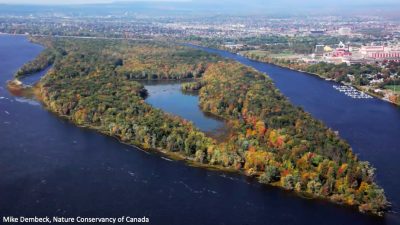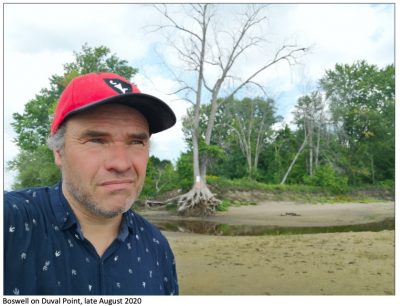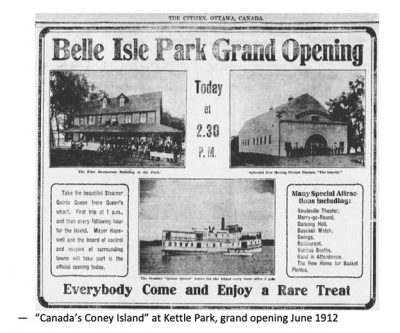 Journalism professor Randy Boswell delivered a virtual public talk on Dec. 2 for the Historical Society of Ottawa, building on a lengthy feature article he’d written recently for the Ottawa Citizen about the history of the national capital’s controversial Kettle Island.
Journalism professor Randy Boswell delivered a virtual public talk on Dec. 2 for the Historical Society of Ottawa, building on a lengthy feature article he’d written recently for the Ottawa Citizen about the history of the national capital’s controversial Kettle Island.
The 3.7-kilometre-long island, third largest in the entire Ottawa River system, has been a flashpoint in local politics for decades because of longstanding plans to build a sixth interprovincial bridge across the island to link east-end Ottawa-Gatineau.
Now a protected ecological reserve owned almost entirely by the Nature Conservancy of Canada, the island has a richly layered human history that began thousands of years ago because of its strategic location so close to the intersection of the Ottawa, Gatineau and Rideau river systems — key travel routes for Indigenous people in the future Central Canada.
 As Boswell highlighted in his lecture, an 1839 decision by the Legislative Council of Lower Canada summarily ended an era during with local Algonquin communities collected rent from settlers who farmed parts of Kettle Island. The decision, Boswell stated, makes Kettle Island a “dark symbol of colonialism and Indigenous dispossession.”
As Boswell highlighted in his lecture, an 1839 decision by the Legislative Council of Lower Canada summarily ended an era during with local Algonquin communities collected rent from settlers who farmed parts of Kettle Island. The decision, Boswell stated, makes Kettle Island a “dark symbol of colonialism and Indigenous dispossession.”
The island later became a recreational playground for generations of residents of Ottawa and Hull (the future Gatineau). In 1912, an amusement park hailed as Ottawa’s “Coney Island” was opened at west end of island as part of a real estate scheme to sell more than 200 cottage lots to the east.
A ferry service delivered thousands of visitors to the island every summer weekend for carnival games, nature walks, musical performances and sporting events. At that time, the island featured a “moving picture theatre,” a bandshell and a grand hotel.

But the real estate development collapsed in bankruptcy and the Disneyesque resort what shut down. Kettle Island remained a popular cottaging place until the early 1960s, when the construction of the Carillon Dam 100 kilometres downstream of Ottawa raised river levels and forced seasonal inhabitants to leave the island.
Nature has since reclaimed the place, which typically gets little attention from capital-area residents until the regularly recurring bridge issue flares again — as it did last year when the federal budget provided funding for new studies on an east-end bridge across the Ottawa.
 As a journalist, Boswell pioneered a national history beat with Ottawa-based Postmedia News, and as an Ottawa Citizen reporter and freelancer he has written frequently about historical subjects in the National Capital Region.
As a journalist, Boswell pioneered a national history beat with Ottawa-based Postmedia News, and as an Ottawa Citizen reporter and freelancer he has written frequently about historical subjects in the National Capital Region.
He’s also the publications director of the Historical Society of Ottawa and the editor of its quarterly newsletter, Capital Chronicle.
Thursday, December 3, 2020 in General, Journalism News
Share: Twitter, Facebook



